Life without Space: Stapledon and Strawson on Auditory Universes

By Professor Barry Dainton
The sheer mind-numbing scale and richness of Olaf Stapledon’s Star Maker is such that it is hard not to be impressed. In his A History of Science Fiction Adam Roberts attempts to sum up thus:
Billennia are traversed; the very stars are revealed as partaking in consciousness; the whole of time and space is encompassed, the whole universe—and then revealed as merely an infinitesimal fraction of the complete sheaf of hyper universes. …In its radical uncertainty, as much as its bold attempt to reconfigure the metaphysics of creation, ethics and eschatology as a properly cosmological business, Star Maker is an unprecedented and unsurpassed masterpiece. (2016, 245-6)
Particularly impressive in this respect is the final main section of the book— “The Maker and His Works”—where the narrator attempts to describe the many and varied universes the Star Maker creates en route to maturity. Stapledon was a philosopher before he embarked on fiction—indeed he continued to teach philosophy for much of his career—and some of the Star Maker’s creations reflect this. Consider this early effort:
Sometimes the Star Maker fashioned a cosmos which was without any single, objective, physical nature. Its creatures were wholly without influence on one another; but under the direct stimulation of the Star Maker each creature conceived an illusory but reliable and useful physical world of its own, and peopled it with figments of its imagination. These subjective worlds the mathematical genius of the Star Maker correlated in a manner that was perfectly systematic. (Star Maker, 121).
Stapledon here characterizes in an enviably succinct manner the sort of metaphysical conception advocated in different forms by Berkeley (1685-1753) and Leibniz (1646-1716). When these philosophers were operating the dominant metaphysical systems was the dualistic metaphysics of Descartes, which featured three different types of entity: (a) an all-powerful God, (b) matter and (c) human minds, in the guise of immaterial souls. For Berkeley and Leibniz the existence of God was a given, so rejecting this element of Descartes’ system was not an option, but mind-independent matter was very vulnerable.
We naturally assume that the physical things in our surroundings—houses, trees, the sun and stars—are the direct causes of our perceptual experiences. But perhaps this assumption as wrong. Since God is all-powerful, God could easily cause us to have experiences that seem to be of houses, trees, the sun and stars, even if in reality these objects did not exist. Once this is appreciated, the existence of the material world—construed as an entirely mind-independent realm—can come to be seen as unnecessary complication. Berkeley and Leibniz argued the physical realm (as usually construed) is a redundant complication that is wholly surplus to requirements. On their view we are immaterial souls whose divinely controlled perceptual experiences are strongly suggestive of a communal external physical reality—a reality which does not in fact exist, or at least does not exist in the way it is often assumed. What does exist are “subjective worlds” (as Stapledon calls them), private spheres of experience whose contents are systematically correlated. When I throw a ball for you to catch, God ensures that you have visual experiences which to allow you to catch the ball.
It would be wrong to suppose that all or even most of Star Maker’s creations were directly inspired by or drawn from the classical Western philosophical literature—many are without precedent there, while others worlds anticipate subsequent developments in other fields. For example:
In one inconceivably complex cosmos, whenever a creature was faced with several possible courses of action, it took them all, thereby creating many distinct temporal dimensions and distinct histories of the cosmos. Since in every evolutionary sequence of the cosmos there were very many creatures, and each was constantly faced with many possible courses, and the combinations of all their courses were innumerable, an infinity of distinct universes exfoliated from every moment of every temporal sequence in this cosmos. (Star Maker, p. 127)
Stapledon here clearly anticipates the “many-worlds” cosmology that has begun to be taken increasingly seriously by physicists struggling to make sense of quantum mechanics.
Another of Stapledon’s speculations in Star Maker regarding what the future may hold has also proved to be highly influential. In an article published in 1960 Freeman Dyson suggested that future civilizations eager to increase their supply of energy might well construct huge shells around their suns to capture energy that would otherwise escape into outer space. These structures came to be known as “Dyson Spheres”. As Milan Ćirković points out in his recent Stapledon lecture (2021) astronomers engaged in the search for extra-terrestrial intelligence are currently looking for the distinctive radiation signatures these mega-structures would produce. To his credit Dyson himself later willingly conceded that he’d borrowed the idea from Stapledon: “Some science fiction writers have wrongly given me the credit for inventing the artificial biosphere. In fact, I took the idea from Olaf Stapledon, one of their own colleagues.” (Disturbing the Universe, 1979, p. 211)
My aim here is to investigate another of the ways Stapledon’s Star Maker may have impacted on later developments. It is possible that Stapledon’s work altered the course of 20th century analytic philosophy in a manner that has not been widely recognized.
Strawson’s “Sounds”
Peter Strawson (1909 – 2006) was an analytical philosopher of considerable renown. He was
Waynflete Professor of Philosophy at Oxford from 1968 to 1987 and knighted for his services in 1977. Strawson was credited with rehabilitating metaphysics in the analytic philosophical tradition.
In the years preceding the publication of Strawson’s Individuals in 1959 metaphysics in the Anglophone philosophical world was decidedly out of fashion. According to Carnap and the logical positivists, since metaphysical claims could not be empirically verified or falsified they were strictly meaningless. The Wittgenstein-inspired “ordinary language” philosophical movement was also resolutely anti-metaphysical. According the latter, philosophers should not try to solve philosophical problems, but confine themselves dissolving them, by showing how the apparent problems are rooted in misuses of ordinary language. Over the next decade or so the situation slowly change, and by the 1970’s leading philosophers were once again happily engaging in metaphysical speculations. Strawson’s Individuals played a significant role in this metaphysical renaissance, and the most striking chapter in this book was the second: “Sounds”.
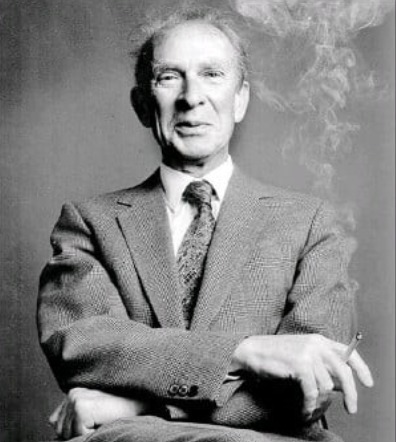
Peter Strawson
In the opening chapter of Individuals Strawson argues that enduring space-occupying objects play a fundamental role in our conceptual scheme. In the second chapter he moves on to consider whether other conceptual schemes are possible. Could a being who inhabits a world where there are no material bodies nonetheless be justified in thinking of themselves as inhabiting a mind-independent world? To investigate this question Strawson a purely auditory universe, a universe where there exist conscious subjects who experience nothing but sounds—beings whose experience is (we can suppose) temporal but entirely non-spatial.
Living as we do in a world of three spatial and one temporal dimension the idea that there can be objects which exist when we are not perceiving them is unproblematic. I cannot currently see the table in my kitchen, but that’s because I’m currently somewhere else: if I were to return to the kitchen I’d soon see the table. Could there be something analogous to “somewhere else” in a non-spatial purely auditory world? Strawson suggests the answer may well be “yes”, provided the sound-world has the right sort of character:
Suppose we imagine that the purely auditory experience we are considering has the following characteristics. A sound of a certain distinctive timbre is heard continuously, at a constant loudness, though with varying pitch. This sound is unique in its continuity. We may call it the master-sound. It may be compared with the persistent whistle, of varying pitch, which in a wireless set in need of repair, sometimes accompanies the programmes we listen to. In addition to the master-sound, other sounds or sequences of sounds of various degrees of complexity are heard. Some of these sequences may be supposed to have the kind of unity which pieces of music have. They recur and are recognized … One can imagine that transitions up and down the master-sound sometimes occur quite fast; while at other times the pitch of the master-sound remains invariant for quite considerable periods. One may imagine, finally, that variations in the pitch of the master-sound are correlated with variations in the other sounds that are heard, in a way that is very similar to that in which variations in the position of a tuning-know of a wireless set are correlated with variations in the sounds that one hears on the wireless. (1959, 76)
To make matters more concrete, let’s take the Beatles’ tune “Hey Jude” to be our example of a sound-sequence that has the kind of unity that pieces of music have. Let’s also suppose that this tune is constantly playing at a particular location on the master-sound, as depicted in the figure below.
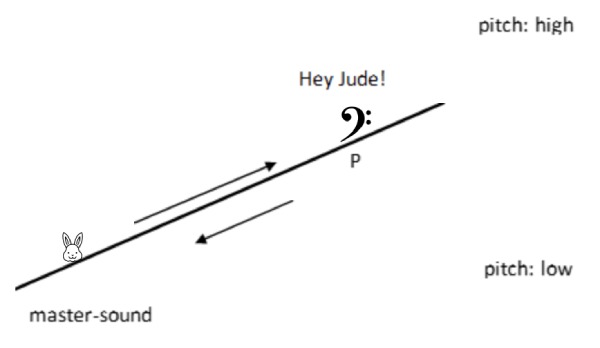
Following Strawson’s lead, let’s suppose that this non-spatial purely auditory world includes a perceiving subject equipped with a keen sense of hearing and the ability to move up and down the master-sound. This motion, when it occurs, results in variations in the pitch of the master-sound: move in one direction and the master-sound rises in pitch, move in the other direction (there are only two) and it lowers in pitch.
Our subject notices that at one particular master-sound pitch—call it P—the song “Hey Jude” is playing at maximal volume. It’s also the case that whenever subject moves away from P in either direction along the master-sound the song’s volume gradually diminishes until it becomes so faint it can no longer be heard at all. As soon as our subject once again finds itself in the proximity of P then it begins to hear “Hey Jude” again, and the volume is loudest precisely at P.
If someone were to have experiences of this sort wouldn’t they soon start to think that “Hey Jude” exists at P in a more or less permanent way, and exists there even when not perceived? Strawson suggests that it’s plausible to think the answer to this question is “Yes”. He consequently concludes that even beings who exist in non-spatial worlds can legitimately think of themselves as inhabiting a world containing mind-independent objects.
Towards the end of “Sounds” Strawson wonders what features an auditory world would have to possess in order for its inhabitants to know they were not alone, but co-existing with others of their kind.
We may, for example, suppose our inhabitant of the auditory world to be not only able to initiate movement along the pitch-range of the master-sound, but also initiate sounds of a different character from those not initiated by him—endow him, so to speak, with a voice. The problem of equipping him with a persistent audible body may be perhaps solved by means of the master-sound itself. It is audible to him all the time, and we may suppose that for each inhabitant of the auditory world, there is a master-sound of a different timbre, though no one hears another except when it as the same pitch-level or nearly the same pitch-level as his own. Two hearers are then in the same auditory place. (1959, 85)
If we furnish our auditory subjects with the ability to speak and understand one another’s voices it’s not obvious that we need to equip them with auditory analogues of bodies—won’t their voices suffice to alert them to the existence of other people? Nor is it obvious that we still need the services of a master-sound, since differences in perceived volume could provide the basis for judgments regarding relative distances instead of pitch. In any event, having raised this issue Strawson prefers not to pursue this more complex scenario further: “the fantasy, besides being tedious, would be difficult to elaborate clearly. For it is too little clear exactly what general features we should try to produce and why.” (ibid.)
Stapledon’s Musical Universes
Two decades prior to Strawson’s Individuals, Stapledon had already described a number of auditory universes in the final part of Star Maker. The earliest creations are very simple but the Star Maker’s handiwork soon starts to be more complex:
Many of these early universes were non-spatial, though none the less physical. And of these non-spatial universes not a few were of the “musical” type, in which space was strangely represented by a dimension corresponding to musical pitch, and capacious with myriads of tonal differences. The creatures appeared to one another as complex patterns and rhythms of tonal characters. They could move their tonal bodies in the dimension of pitch … [a] creature’s body was a more or less constant tonal pattern, with much the same degree of flexibility and minor changefulness as a human body. Also, it could traverse other living bodies in the pitch dimension much as wave-trains on a pond may cross one another. But though these beings could glide through one another, they could also grapple, and damage one another’s tonal tissues … Universes of this non-spatial kind, though incomparably simpler and more meager than our own cosmos, were rich enough to produce societies capable not only of “agriculture” but of “handicrafts,” and even a kind of pure art that combined the characteristics of song and dance and verse. Philosophy, generally rather Pythagorean, appeared for the first time in a cosmos of this “musical” kind …
In this auditory universe there is nothing analogous to a master-sound—or if there is, Stapledon doesn’t mention it. But there is nonetheless a feature which provides the inhabitants of this world with something analogous to location and distance: pitch. The envisaged musical beings consist of complexes of tones which possess different locations by virtue of existing at different pitches, and which can change location by changing their pitch.
Beings that have nearly the same pitch are located close to one another, those with exactly the same pitch have precisely the same location. It is possible for beings that are getting closer and closer to pass right through one another, in the manner of the red and blue beings depicted in the figure below
This might seem rather odd to us, but as Stapledon points out solid material objects may not be able to pass through one another, but wave phenomena such as ripples of water or sounds can do so easily.
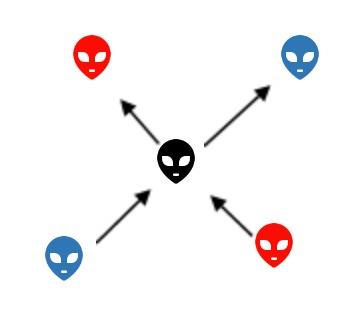
Towards the bottom of this diagram the pitches emitted by the red and blue beings are quite different, but they become more and more similar until eventually the two beings coincide, before diverging again as their pitches diverge.
Not content with creating one-dimensional sound-worlds Stapledon’s Star Maker goes on to experiment with two-dimensional variations on the theme, relying on differences in timbre and volume:
Space … appeared first as a development of a non-spatial dimension in a “musical” cosmos. The tonal creatures in this cosmos could move not merely “up” and “down” the scale but “sideways.” In human music particular themes may seem to approach or retreat, owing to variations of loudness and timbre. In a rather similar manner the creatures in this “musical” cosmos could approach one another or retreat and finally vanish out of earshot. In passing “sideways” they traveled through continuously changing tonal environments. In a subsequent cosmos this “sideways” motion of the creatures was enriched with true spatial experience. (Star Maker, pp. 120-121)
Since they are no longer confined to a single dimension the inhabitants of this universe with the same pitch are not obliged to coincide and interpenetrate, although they presumably could so if they wanted.

When Stapledon was putting the finishing touches to Star Maker in the mid 1930’s he also experimented with short fiction, and the action in one of the resulting stories—“A World of Sound”—takes place in a dreamt musical universe. The story is quite a short one, and ended up being donated to a fundraising anthology for the Royal Liverpool Children’s Hospital published in 1936 (Crossley, 232) But it does provide room for Stapledon to be a little more expansive:
Against an obscure, exotic background of more or less constant chords and fluttering “leafage,” so to speak, several prominent and ever-changing sound-figures were playing. Each was a persistent musical object, though fluctuating in detail of gesture and sometimes ranging bodily up or down the scale.
Suddenly I made a discovery which should have been incredible, yet it seemed to me at the time quite familiar and obvious. I found myself recognizing that these active sound-figures were alive, even intelligent. In the normal world, living things are perceived as changing patterns of visible and tangible characters. In this mad world, which was coming to seem to me quite homely, patterns not of color and shape but of sound formed the perceptible bodies of living things …
Observing these creatures that disported themselves before me, I discovered, or rather rediscovered, that though this world had no true space, such as we perceive by sight and touch, yet it did have a sort of space. For in some sense these living things were moving in relation to me and in relation to one another. Apparently the “space” of this world consisted of two dimensions only, and these differed completely in quality. One was the obvious dimension of tonality, or pitch, on the subtle “keyboard” of this world. The other was perceived only indirectly. It corresponded to the heard nearness or remoteness of one and the same instrument in the normal world. Just as we see things as near and far through the signification of color and perspective, so in this strange world, certain characters of timbre, of harmonics, of overtones, conveyed a sense of “nearness”; others a sense of “distance.” A peculiar blatancy, often combined with loudness, meant “near”; a certain flatness, or ghostliness of timbre, generally combined with faintness, meant “far.” An object receding in this “level” dimension (as I called it) would gradually lose its full-bodied timbre, and its detail and preciseness. At the same time it would become fainter, and at last inaudible.
I should add that each sound-object had also its own characteristic timbre, almost as though each thing in this world were a theme played by one and the same instrument. But I soon discovered that in the case of living things the timbre-range of each individual was very wide; for emotional changes might be accompanied by changes of timbre even greater than those which distinguish our instruments.
In contrast with the variegated but almost changeless background or landscape, the living things were in constant movement. Always preserving their individuality, their basic identity of tonal pattern, they would withdraw or approach in the “level” dimension or run up and down the scale. They also indulged in a ceaseless rippling play of musical gesture. Very often one of these creatures, traveling up or down the scale, would encounter another. Then either the two would simply interpenetrate and cross one another, as transverse trains of waves on a pond; or there would be some sort of mutual readjustment of form, apparently so as to enable them to squeeze past one another without “collision.”(Stapledon, Far Future Calling, pp. 63-65)
The protagonist enjoys most of the brief time he spends in this universe, and meets some (sonically) colourful characters before getting eaten by a stridently tentacled beast of prey.
A Question of Influence
The idea that an entire universe could be composed of nothing but sounds populated by beings who are capable of perceiving only sounds is an unusual one, to put it mildly. The accounts of auditory worlds that Stapledon and Strawson provide us with are broadly similar: in both we find intelligent auditory beings with the capability of moving in relation to their surrounding sound-scapes, and pitch is used to create an analogue of one-dimensional distance. It is true that in Star Maker Stapledon outlines a way in which a purely auditory world could possess two-dimensions rather than one and Strawson doesn’t follow suit. But this is not surprising: as Stapledon himself observes, a two-dimensional sound-world comes close to being a spatial world, and Strawson was interested in investigating a non-spatial world. Star Maker was published in 1937 and Individuals in 1959. Did Star Maker also have an influence on 20th century philosophy, by inspiring one of the more celebrated creations of one its most celebrated practitioners?
As far as I know there is no direct evidence that Stapledon did influence Strawson. There is certainly none in Individuals, which is an austere and unusually self-contained philosophical work with little by way of footnotes or other indications as to sources. Moreover, there is at least of one piece of direct evidence which points in the opposite direction. While head of the Liverpool Philosophy Department where Stapledon once worked Stephen Clark (a long-time Stapledon fan) relates that on two separate occasions he can remember asking Strawson whether he had ever read any Stapledon, and on each occasion Strawson said that he had not. Strawson’s son Galen—also a well-known and increasingly influential philosopher—has confirmed in correspondence that to the best of his knowledge his father was not an avid fan of science fiction.
Even so there are a number of considerations which suggest that it would be a mistake to rule out the possibility that Star Maker did in fact influence Strawson, if only by expanding in a distinctively auditory manner the spectrum of worlds that he was inclined to view as genuinely possible. Star Maker could easily have exerted an influence of this sort even if Strawson had completely forgotten ever having read the book by the time he got around to writing Individuals in 1959, or when questioned by Clark decades after that.
First of all, although some philosophers read little or no fiction—Gilbert Ryle, the previous holder of the Waynflete Chair reputedly read only Jane Austen and P.G. Wodehouse—we know Strawson did not fall into this category. As an undergraduate, he initially read English Literature before switching to PPE. In his Intellectual Autobiography Strawson’s tells us: “In the summer of 1946, having unhesitatingly declined the bait of further promotion [in the military], I was demobilized. I had served for six years, thinking a little, but not much, about philosophy and devoting most of such private leisure as I had enjoyed to reading the greater French and English novelists.”
The fact that Strawson read more broadly—at least in comparison to some of his analytic philosopher peers—opens up the possibility that that he encountered Star Maker and read it. We also know that he was not averse to more popular works if he found the subject matter interesting. Explaining his switch from literature to PPE Strawson tells us:
More important was the fact that I had already begun to feel the intellectual pull of philosophy. This was partly due to my having read Rousseau’s Du Contrat Social and been captivated by its combination of passion with what I then mistook for rigour; partly because I had already discovered in myself some capacity for argument and for detecting the flaws, confusions, and inconsistencies in the discourse of others; and partly to reading some popular books on philosophy (notably by the not contemptible C. E. M. Joad) and being taken with the irresistible fascination of the questions, problems, and theories there recorded. (ibid.)
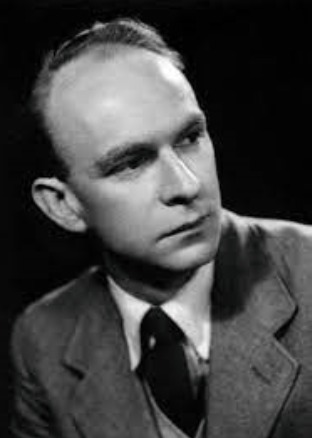
The (younger) Peter Strawson (The British Academy)
There is also the timing to consider. In his Autobiography Strawson relates that he started his undergraduate university career in 1937 when he was seventeen years old. Star Maker was first published in this very same year, 1937. Stapledon’s Last and First Men (1930) had been well-received critically and enjoyed considerable commercial success—just prior to Star Maker publication in July it had been re-printed as one of first ten books in the then new series of “Pelican” paperbacks. So there is every reason to think Star Maker would be in the bookshops the youthful Strawson would have been exploring during his first student years.
Also relevant is the fact that on its release Star Maker was widely and enthusiastically reviewed, as Crossley relates:
The Times claimed it must “automatically enter the small group of modern classics.” At the Daily Herald the reviewer reached into his journalist’s index to “take out unhesitatingly that dustiest and most precious card—the one marked ‘Masterpiece.’” [a US reviewer] gasped at the book’s daring: “Beside his stupendous panorama, his vision of worlds and galaxies, of cosmos piled upon cosmos, the glimpses of the future that Mr Wells and others have provided for us are no more than penny peepshows.” …[Bertrand] Russell enjoyed the “grim jest” of Star Maker’s political allegory and the “austere beauty” of its style. The book’s spiritual inquiry … engaged Russell for its “intellectual courage.” He liked the notion of the Star Maker as “an artist rather than a philanthropist,” and in the final mediation on the “two lights” of reason and love he found “all that is good in religion without any of the bad features of most historical creeds.” (Crossley 1996, 248-9)
Doesn’t this sound like just the kind of book an intellectually curious young philosopher such as Strawson might have found intriguing? Even if in his later years he could not recall reading it?
By Professor Barry Dainton
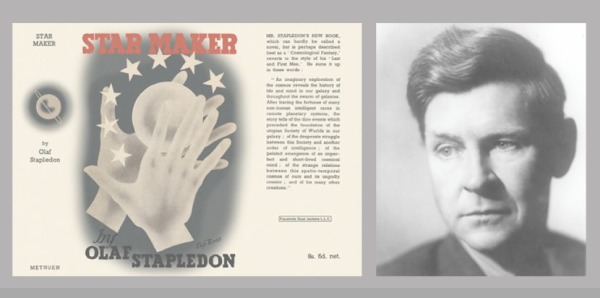
Roberts, Adam (2016) A History of Science Fiction, 2nd edition, London: Palgrave
Milan M. Ćirković (2021) “Astroengineering and Futures Studies”, Olaf Stapledon Centre for Speculative Futures lecture
Crossley, Robert (1994) Olaf Stapledon: Speaking for the Future, New York: Syracuse University Press
Dyson, Freeman (1960) “Search for Artificial Stellar Sources of Infrared Radiation”, Science 131, 1667-1668
Dyson, Freeman (1979) Disturbing the Universe, New York: Basic Books
McCarthy, Patrick (2004) “The Genesis of Star Maker”, Science Fiction Studies, 31(1)
Russell, Bertrand (1937) “War in the Heavens,” London Mercury 36 (July), 297-8
Stapledon, Olaf (1936) “A Musical Universe” in Hotch-Potch, ed. John Brophy (1936), also in Far Future Calling: Uncollected Science Fiction and Fantasies, www.sfgateway.com
Stapledon, Olaf (1937/2016) Star Maker, Jovian Press (Kindle Edition)
Strawson, P.F. (1959) Individuals, London: Methuen
Strawson, P.F. (2011) “Intellectual Autobiography”, in Philosophical Writings, Oxford: Oxford University Press.